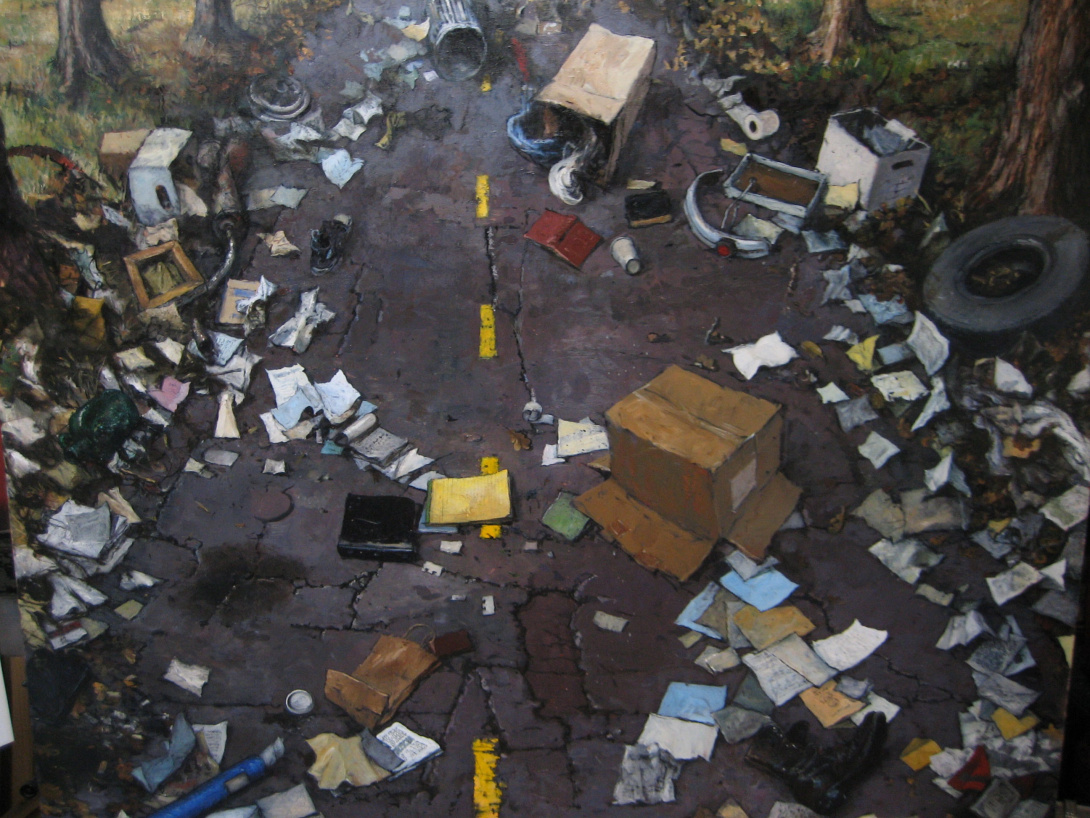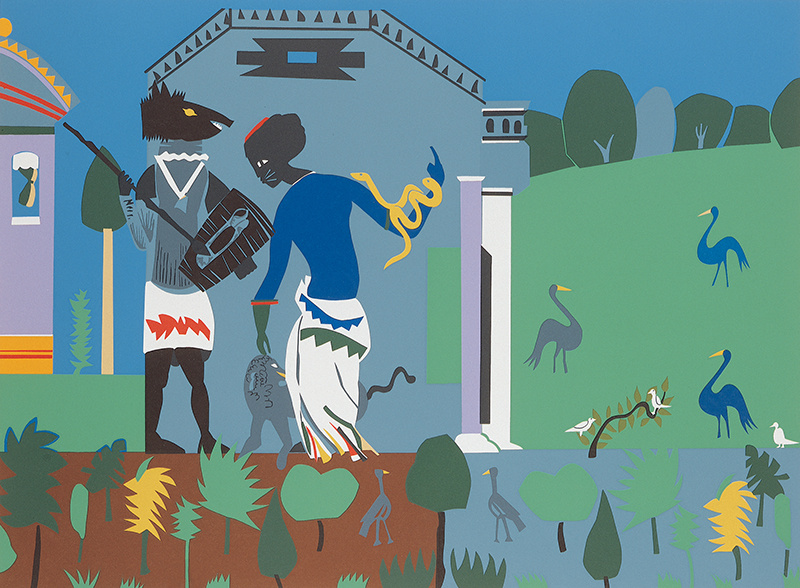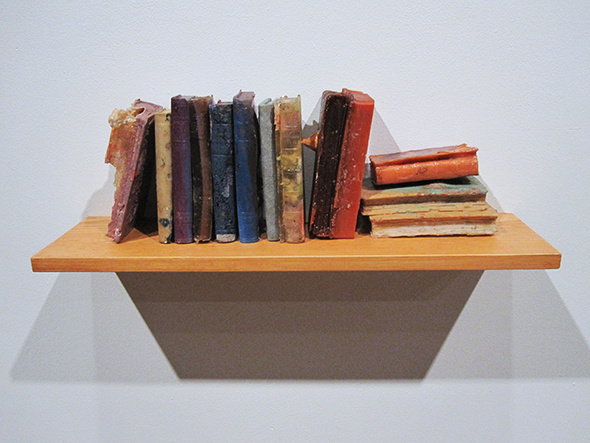The book as we have known it for centuries is challenged today by the rapid growth of digitization and e-books. This trend raises tough questions about the future of conventional books and the once-beloved printed page. In the midst of such radical change, this exhibition looks at the influence of the book on visual artists. Book-ish includes works from the Museum’s permanent collection that have been inspired by books, literature, language, and the artists’ reverence for reading.
The physical book—its format, pages, illustrations, and text—was a starting point for a number of the artists whose works are included in Book-ish. Stella Waitzkin is known for her obsessive “library” installations, with which she filled her small apartment in New York’s legendary Chelsea Hotel from floor to ceiling. She cast ornately bound books and stacks of books in resin, as if to arrest them in time and hermetically preserve the knowledge held between their covers. Like cherished memories, her books are hauntingly inaccessible and removed from reality. Lewis deSoto took conceptual inspiration from literature in his series “KLS,” based on Hermann Hesse’s 1919 novella Klingsor’s Last Summer (which deSoto ritually rereads every summer). The artist gave visual form to the author’s compelling verbal descriptions of color by arranging Hesse’s hues in concentric circles that correspond to the order in which the hues are cited in the book. Each of deSoto’s images is an abstract visual manifestation of a chapter in the novella.
Also included in the exhibition are works by Chester Arnold, Romare Bearden, Enrique Chagoya, and Rupert Garcia, among others.
Sponsors
- Doris and Alan Burgess


